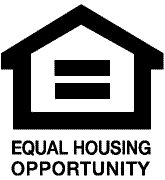
57 East Main Street, Suite 217
Westborough, MA 01581
[email protected]
Business: (508) 366-4266
Cell: (508) 735-5161
www.EQRE.com
By Barbara Pronin
As we turn the corner from summer toward fall, still in the midst of the greatest health crisis in a century, the real estate market in most areas of the country remains at a white-hot sizzle.
“It’s totally crazy,” said Joan Docktor, president, Berkshire Hathaway HomeServices Fox & Roach Realtors, serving Pennsylvania, Delaware and New Jersey. “In all my years in residential real estate, I have never seen anything like this – multiple offers, bidding wars. One $1 million home in the Philadelphia suburbs sold in three days, after several offers, at $40,000 over the asking price.”
It is not surprising, she said, with only 1.3 months of available inventory and demand far outpacing supply, as consumers re-evaluating their lifestyles rush to leave the city for the suburbs and/or snap up second or vacation homes.
“Especially as more people determine they can work from home, they are ready to pull up stakes and give up everything they know for a slower-paced life in a pleasant setting,” she said.
Demand along the Jersey shore is especially strong, she noted, driving up prices by s much as 11 percent over the year ago period.
“Buyers are paying cash, removing inspection requirements, using escalation clauses,” said Docktor. “Sellers need to rely on spreadsheets to help them sort out the offers.”
Compounding the normal demand in Arizona, noted Matt Deuitch, designated broker, DPR Realty in Scottsdale, is a surging in-migration from consumers keen to leave behind the high prices and high-octane lives in states like California, New York and New Jersey.
“People are retiring early as a result of the pandemic, or moving their families because they can,” Deuitch said. “With inventory at next to nothing here, and interest rates still at rock bottom, buyers are bidding high and removing every possible contingency to compete for the limited supply.”
Consumers are doing their homework, noted Joan Kuptz, broker/owner of RE/MAX Advantage in Henderson, Nev., a suburb of Las Vegas.
“They see that Nevada has no state taxes and is a relatively cheap state to live in,” she said. “As a result, in-migration here is increasing mightily, primarily from California, Florida and Texas, according to a study based on driver’s license requests.”
With a scant 1.4-month supply of available homes, Kuptz said, it is inevitable that a home priced at under $300,000 or $350,000 may draw as many as 20 offers in 24 hours.
“To give you an idea how many buyers are coming in just from the Silicon Valley area of California,” said Kuptz, “the cost to rent a U-Haul from Las Vegas to Oakland is $124 – but the cost to rent one from Oakland to Las Vegas can be well over $2,000.”
The elephant in the room, as calendar pages turn, is whether – and how long – this hot market environment is sustainable.
“One factor is inventory,” said Kuptz. “Many homeowners have been refinancing to take advantage of low rates, but Fannie Mae and Freddie Mac will be adding a 50-basis point fee to most mortgage refinances beginning in September. That may encourage more people to put their homes on the market, which could help ease the crunch.”
The state of new construction is another issue.
“Construction basically came to a standstill mid-COVID,” noted Deuitch,” putting pressure on current housing inventory. But it’s slowly beginning to ramp up. We’re seeing some construction now on the outskirts of Tucson, where starter homes may sell for as little $250,000.”
There is the normal slowdown leading up the holidays.
“The season started late and picked up steam fast,” Deuitch noted. “There is no way to know how long pent-up demand will last.”
Yet another factor is unemployment.
“Unemployment has hit the hospitality industry hard,” noted Kuptz. “Here in Las Vegas, for example, a couple of casino/hotels have opened, but some may never re-open.
What that will mean for the overall economy still remains to be seen.”
Financial factors weigh heavily, agreed Docktor.
“It’s difficult to predict,” she said, “if unemployment remains high and renter’s protections are not renewed, how much renter displacement might impact the housing picture – or, for that matter, how much a second stimulus package might help.”
And, of course, there is the pandemic itself.
“This health crisis has indelibly changed our way of thinking, touching every aspect of our lives,” Docktor said. “How soon there is an effective vaccine, when more Americans feel safe and stable, all of this will factor in.”
Still, said Deuitch, there is reason to believe the housing market will remain strong.
“There is no housing bubble this time around,” he said. “There is no easy money.”
In fact, he said, credit has tightened as lenders check and re-check a borrower’s employment status right up until closing.
“Barring some huge calamity,” Deuitch said, “like continuing surges of the coronavirus or a new economic catastrophe, I think we will continue to see a healthy real estate market for at least the foreseeable future.”
Elaine Quigley, CBR, CRS, GRI
57 East Main Street, Suite 217, Westborough, MA 01581
Cell: (508) 735-5161

















